Changing a tire on a fat bike can be a real pain. Most often, it involves removing the wheel and pulling off the old tube, putting on the new tube, replacing the tire, and then reinstalling the wheel. Not only is this a lot of work, but it can also be dangerous if you don’t do it right. That’s why we wrote this simple guide to changing a fat bike tire. It’s not the most scientific guide ever written, but it does the job and it’s easy to understand that how to change a fat bike tire.
Table of Contents
In a Hurry? Here are The 13 Steps How To Change A Fat Bike Tire!You don’t need any special tools to change a tire. In fact, you probably have many of the tools you need right at your home, at your place of work or even in your vehicle. You can get an ordinary wrench or tool and use it to tighten or loosen things when you need to.
Here are some of the essential ones you’ll need.
| IMAGE | Name | Check Price | Approximate Price |
|---|---|---|---|
Bike Tires | Check Price | $15 – $80 | |
Bike Inner Tubes | Check Price | $8 – $20 | |
Screwdriver | Check Price | $8 – $20 | |
Allen key/hex wrench set |
Check Price | $3 – $20 | |
Tire pump | Check Price | $10 -$50 | |
Two levers | Check Price | $5- $30 | |
Tire repair kit (Optional) | Check Price | $8 – $20 |
Now We Will Discuss Step By Step
Step 1 : Disconnect The Brake CableThe first step is to disconnect the brake cable.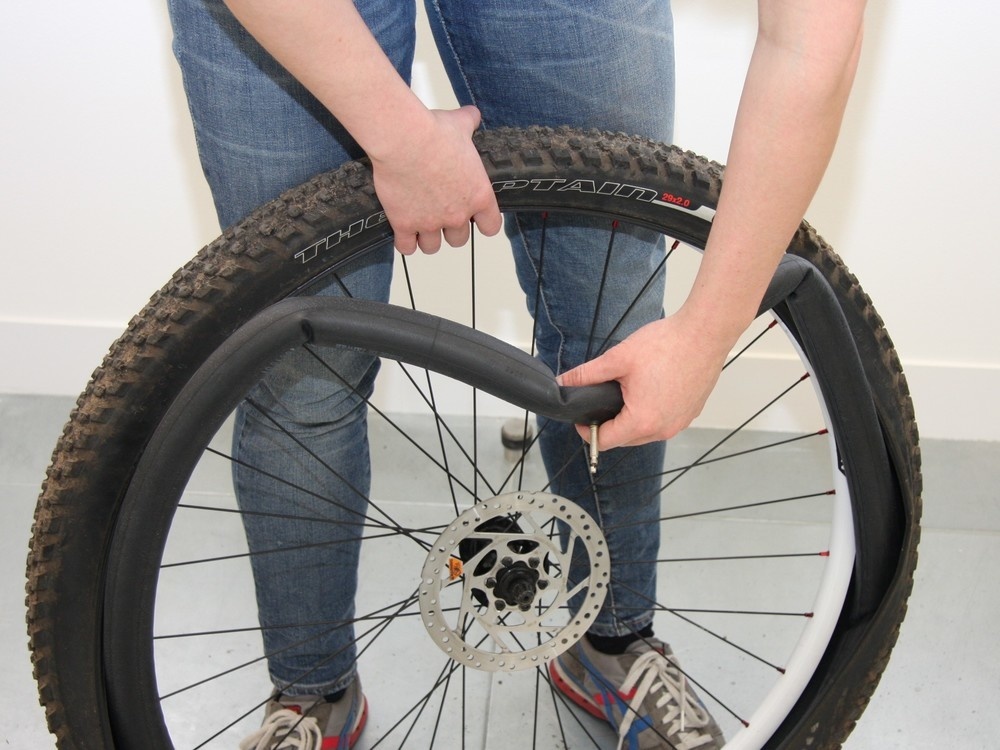 This will make it easier for you to remove the tire from the rim. To do this, you simply undo the two bolts that hold the brake caliper to the frame.
This will make it easier for you to remove the tire from the rim. To do this, you simply undo the two bolts that hold the brake caliper to the frame.
Then, pull it away from the bike. After that, pull the brake cable straight out from the caliper. Now, you should have a clear view of the cable and the inner tube that runs through it. Based on your bike you may have disc brakes, V-brakes or cantilever brakes. In all these cases, you need to remove the brake cable.
Buy inner tubes here
Step 2: Remove The WheelRemove the wheel using a large screwdriver or a wrench. Make sure you remove the locking nut first. Then, use the screwdriver or wrench to pry the wheel off the bike. When you do this, make sure you remove the spokes that are holding the tire on the rim. You should be able to just pull the tire off the rim with no trouble.
Step 3: Remove The Tire From The RimNext, remove the tire from the rim. There are two ways you can do this.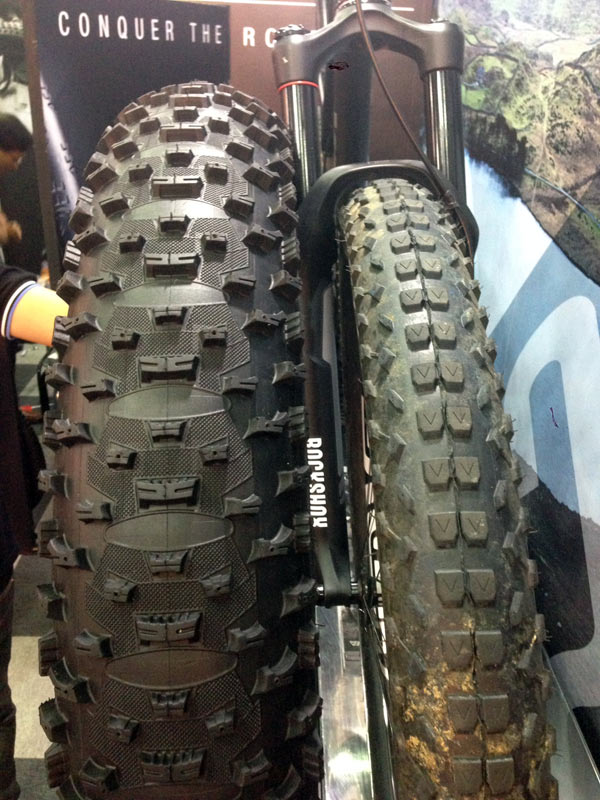 The first way is to use a lug-nut remover or something similar. Basically, what this tool does is, it puts some kind of “friction” on the threads of the lug nuts. This makes it much easier to turn them. So, using one of these tools, simply unscrew the lug nuts and then pull the tire off the rim. The second option is to use a pair of channel-lock pliers.
The first way is to use a lug-nut remover or something similar. Basically, what this tool does is, it puts some kind of “friction” on the threads of the lug nuts. This makes it much easier to turn them. So, using one of these tools, simply unscrew the lug nuts and then pull the tire off the rim. The second option is to use a pair of channel-lock pliers.
Buy Fat bike tires here
Step 4: Unscrew The Air Valve Cap And The Air Valve NutTo unscrew the cap and valve nut, simply use your fingers to grasp the nut from outside the tube and then pull it off. Make sure you don’t lose the washer that goes between the nut and the cap or else you’ll have to stop and get another one.
Buy Tire pump here
Step 5: Pry The Tire Off The RimPry the tire off the rim of fat bike with a punch or channel-lock pliers. Use a punch or channel-lock pliers to pry the tire off the rim. It’s important not to damage the tube when doing this.
For fat bike tire replacement you don’t need any tire lever. It’s just removing the old tire by prying the tire off the rim.
It’s just removing the old tire by prying the tire off the rim.
Pull the inner tube out of the tire by grasping it with channel-lock pliers and pulling straight up. Don’t let go of the channel-lock pliers until you are certain you have all the way out. If you do this correctly, the tire will remain attached to the rim, and you should be able to pull the inner tube right out of the tire. Take extra care when pulling the tube from the tire.
Inspect the inside of the tire for cuts or other damage that may have occurred during storage. If you find any, patch them immediately. You can use a patch made by sewing together several patches or go to a store and buy a premade patch.
Buy Allen key/hex wrench set
Step 8: Inflate A Replacement TubeInflate a replacement tube to the tire’s recommended pressure ( Read Fat Bike Tire Pressure).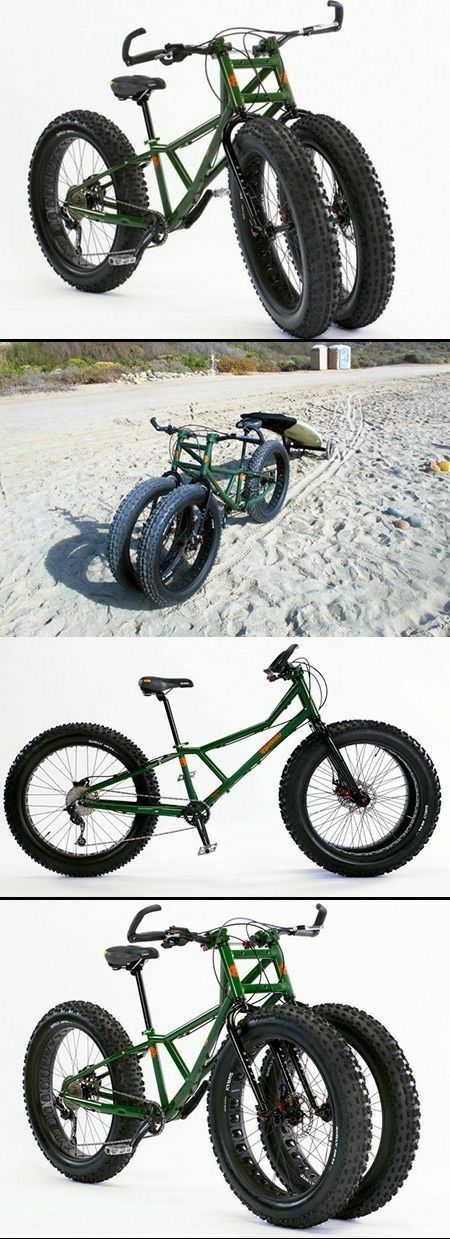
Read this article about Top 8 Fat Bike Fork :With Comparison Chart here
Make sure the tube is properly installed by pushing it against the valve and then pulling slightly on the ends until you hear a ‘clack’.
Step 10: Put The Tire Back On The WheelTake the valve nut off the rim and reattach the valve. Put the tire back on the rim and make sure the tread is going forward. Align the rim with the tire, so the tread goes forward. Then find the air valve hole on the rim and line it up with the tire’s air valve.
To tighten the tire properly, put the valve through the hole, then screw the valve nut back on to hold the tire in place on the rim. Go around the tire and press the rubber on the rim.
Buy Tire pump
Step 11: Slowly Fill The Tire With Air Until It’s FullNow, fill the tire with air and check the pressure. It should be between 35 and 45 psi. If it’s not, remove the valve cap and poke a small pinhole in it with your finger. Blow into that pinhole until the pressure reaches the correct reading. Replace the cap and tighten it down real tight.
It should be between 35 and 45 psi. If it’s not, remove the valve cap and poke a small pinhole in it with your finger. Blow into that pinhole until the pressure reaches the correct reading. Replace the cap and tighten it down real tight.
Put the rear tire into the frame. Set the wheel in the frame by moving the tread forward. If the wheel has nuts, flip the quick release lever back into place to secure it.
To increase the life of your tires, always check the tire to make sure the valve is not clogged with dirt or debris. If it is, clean it out with a stiff wire or a credit card and reattach the valve. Do this every time you change your tires.
Buy Tire repair kit (Optional)
Step 13: Connect The Brake CableFinally! Reattach the brake cable to the caliper using the two provided locknuts. Tighten them down real good. That’s it. Your bike is ready to roll. Give it a test ride. Adjust the handlebars until they are in the correct position for you.
Adjust the handlebars until they are in the correct position for you.
Buy Two levers Here
Whereas a normal tire will cost about $100 to replace, a fat tire can run you up to $1,000 or more. So, if you ride a lot and have a set of fat tires that are getting a little hard to use, it may be time to get them repaired instead of replaced.
Replacing a tube in a normal tire will take about 15 minutes. Fixing a flat in a fat tire could easily take three times as long! The biggest factor in determining whether you should repair or replace your tires is how often you ride and how many miles you put on your tires.
Looking for full suspension fat bike?Click here
Replacing a fat bike tire is fairly simple, and there are a few things you need to watch out for. The first is that the bead seats (the little plastic things that hold the tire onto the rim) must be clean and tight.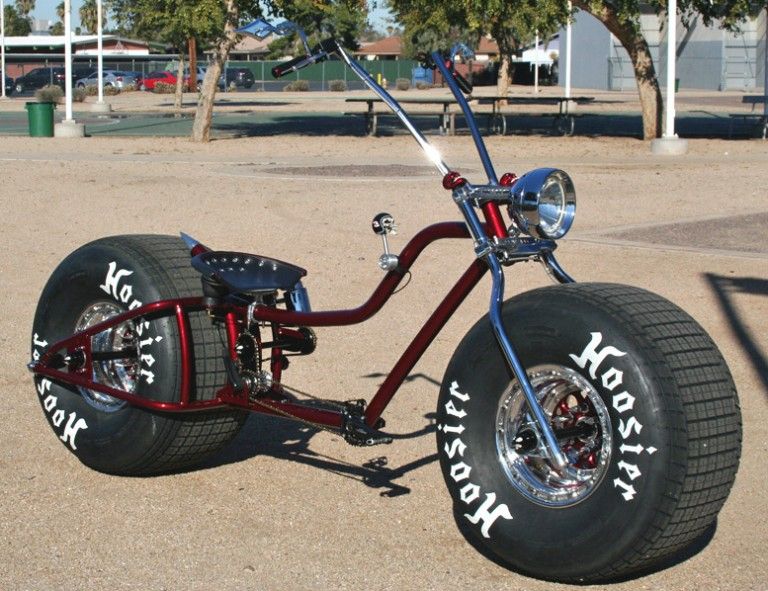
Next, you must remove the wheel nut, then use a ratchet or extension cord to back the wheel off the fork.
What Are Some Tips For Replacing A Fat Bike TireFinally, you should remove the tire, and pull it straight up and off the rim. Then, you can replace it with the new one, re-install the wheel nut, and re-attach the wheel with the supplied tool. Make sure you do it right the first time, or else you could end up with a flat tire again!
Work Outside When NecessaryTry to work outside while changing your fat bike tire and, when possible, do it in the morning before the sun gets too hot. This will help prevent the bead from getting too hot and melting.
Store Bikes Inside ProperlyIt is important to keep your bikes inside during warm weather. This includes storing them on a rack or in an enclosed garage. You may want to consider using a protective cover over the rear wheel when the weather is cool.
It’s better to underinflate instead of over-inflate your tires.
This can cause air leaks and allow moisture into your tires. This could lead to flats or other problems. Check Your Bikes Air Compressors If you have a compressor that comes with your bike, check it every time you ride.
You should be able to test the pressure by putting the valve stem in the valve hole, and then holding it there.
Replace the tire once a year. The tire is under pressure all the time, so it needs to be changed every year. if you ride more often, then change your tire after 2,000 – 3,000 miles
It can take anywhere from 30 minutes to several hours to replace. The first time can be frustrating, but don’t fear. With a little practice, you’ll get it down to half an hour or less.
How long does it take to replace a fat bike tireGenerally, the front tire is easy to replace, but the back tire is a more difficult tire to replace. One more thing, this is not regular mountain bike tires. It is a much heavier tire. It’s true, the most time-consuming thing to do is to remove the tire from the rim, slide the valve stem into the hole, and then replace the tire back onto the rim.
One more thing, this is not regular mountain bike tires. It is a much heavier tire. It’s true, the most time-consuming thing to do is to remove the tire from the rim, slide the valve stem into the hole, and then replace the tire back onto the rim.
Also Read : Are Fat Tire Mountain Bikes Better?
No, you don’t need a special tire tool to change your fat bike tire.
However, if you don’t have a proper tire lever, you may find that it takes longer to change your tire. You can buy a tire lever at a bike shop or online for around $20-$30.
No, a regular bike tire is not the correct size for a fat tire. A regular bike tire will have a much smaller diameter and will not provide the same traction that a fat tire provides.
The tube size depends on your tire size.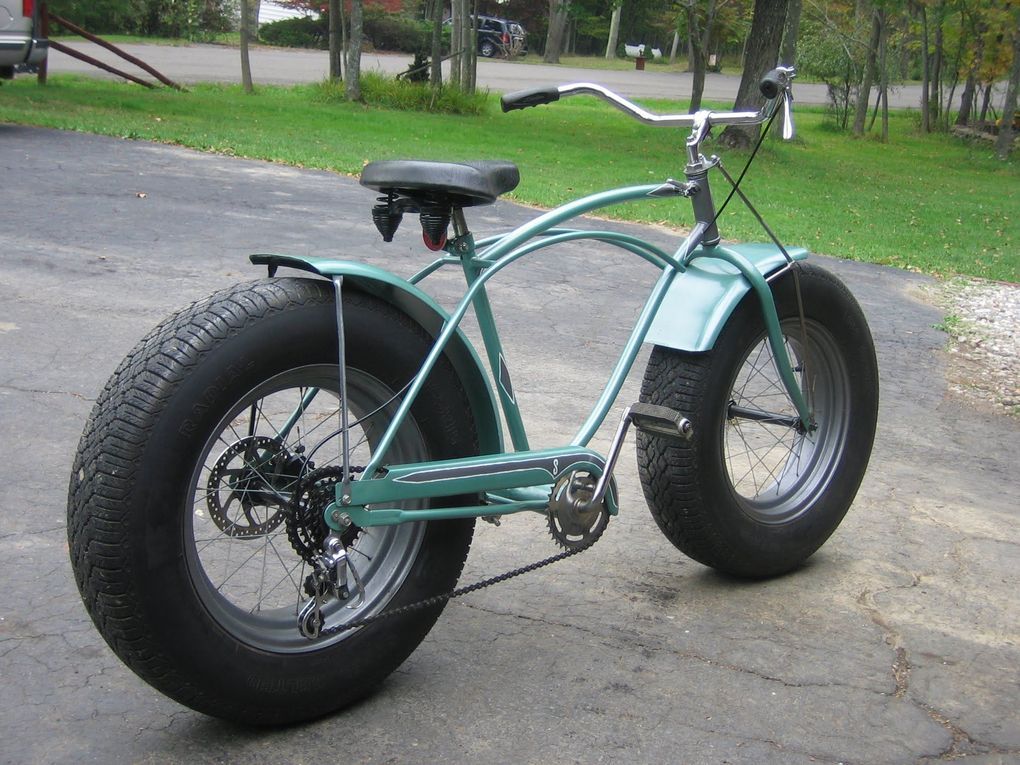 You can check your manual or check the size of your tire with a tape measure.
You can check your manual or check the size of your tire with a tape measure.
Most rims are not “tubeless ready”, but can be easily converted. Tubeless tires need to be purchased separately and replaced with your current tire.
Do fat bike tires have tubes?Without a doubt, fat bikes use tubes. The purpose of tubes is to provide a softer ride for the rider. This gives the rider more control while going down a trail and helps prevent pinch flats.
How do you break the bead on a fat bike tire?There are two ways to break the bead on a fat tire. The first way is to use a tire lever. You can purchase them at a local bike shop or online. A tire lever is a thin piece of metal that allows you to manually pull on the tire bead to break it. You can also break the bead by using a sharp object (like a tire iron) to poke a hole through the bead.
Is it easier to wheelie a Fat tire bike?No, Fat bike Wheelies are much more challenging on a fat tired bike than on a traditional bike. The tires are much larger and provide much more friction. This makes it hard to get traction on the ground and harder to get up into the air.
The tires are much larger and provide much more friction. This makes it hard to get traction on the ground and harder to get up into the air.
Fat bikes are becoming increasingly popular. They are great for getting around the city, but replacing a tire on a fat bike can be difficult. There are a few tips you can use to make this process easier, but it’s not an easy task.
Through our 13 steps on how to change fat bike tires, we hope that you will be able to do it yourself. Thanks for reading and learning with us! Please leave us a comment if you have any questions about how to change fat bike tires, or if you need help yourself. We would love to help!
Spring has sprung, and so it is time for me to get my mountain bike ready for a long summer of trail rides and morning commutes. The only problem is that I need to put new tires on my bike before it will be ready for even a trip around the block. So, I was wondering if I could put wider tires on my mountain bike to be more like the fat tire mountain bike I have been riding all winter.
Putting Wider Tires on Your Mountain Bike
Although you may never be able to convert a regular mountain bike into a full-fledged fat tire mountain bike, you can increase the width of your tires to some extent. The two main constraints are the width of the rim and clearance at the fork, with these kept in mind the width can be increased.
To begin, the most basic bit of information you will need to know is that mountain bike tires
come in three standard diameters. These diameters are…
No matter what width your tire is this is the first thing that is necessary to consider when finding new tires for your mountain bike. The inside diameter of the tire must match the rim of your mountain bike or you’ll be completely out of commission as it simply will not fit onto the bike.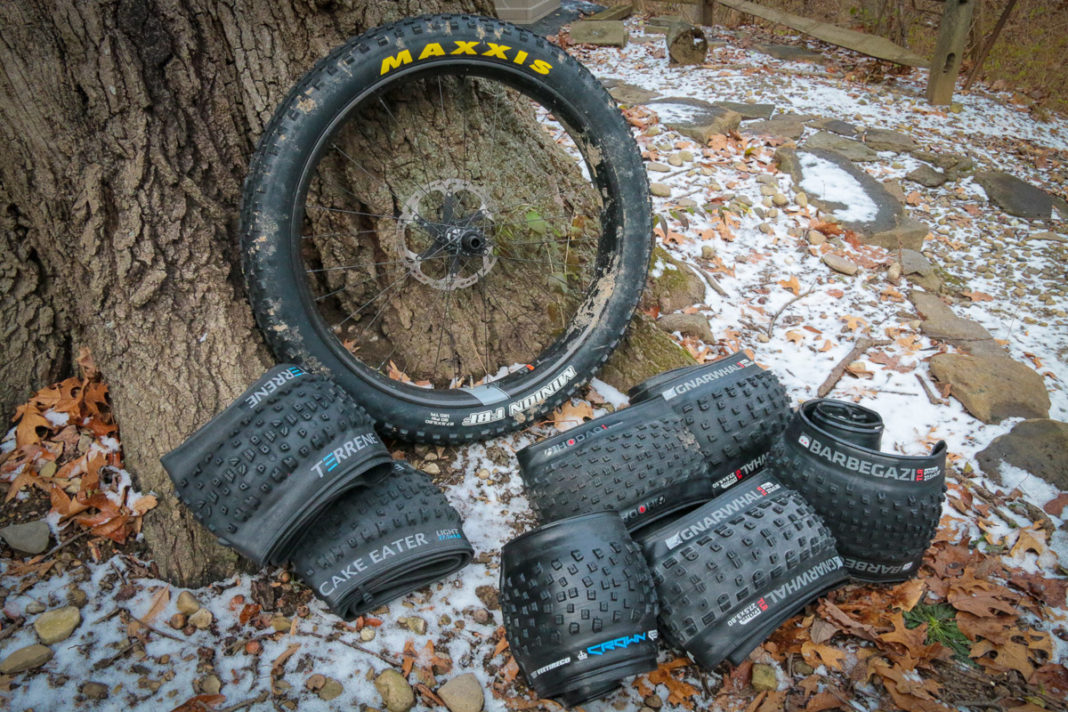
Most American mountain bike tire manufacturers will use this kind of marking to denote size although it is important to know that although marking that are in decimal form which are equal to their fractional counterparts are mathematically equal, in actuality they will be different sizes. It is always better to compare measurements found in the same format.
Mountain Bike Tire Wheel and Tire WidthThe second way that mountain bike tires are measured are by width. When it comes to regular mountain bikes the width will vary from 1.6 inches to 2.5 inches thick. Although, certain models will even come in at up to 3 inches, however, this is not the standard. Often thinner rimmed mountain bikes will accommodate widths around the lower end and thicker rimmed mountain bikes will, of course, fit the thicker ones.
I’ve had a chance to do real life “testing” on lots of different tires over the years. In-turn to share what I’ve learned and describe the characteristics of great tires I’ve compiled this list.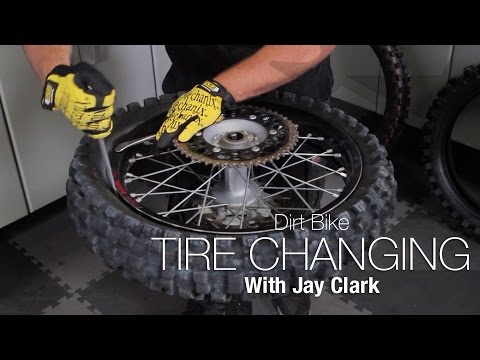
One good way to find exactly which size tire your mountain bike is meant to have by the manufacturers standards is to look at the number on the side of the tires that the bike came with. Understanding these numbers can be pretty easy with just a small bit of explanation. An example of what such a size denotation may look like is this…
27.5 x 2
Or perhaps
27.5 x 1 5/8 x 2
In the first example the first number (27.5) represents the diameter of the tire while the second number denotes the width of the tire. In the second example the optional representation of the height of the tire off of the rim has been placed in between the diameter and width. This is less common but you might encounter it so it is still important to remember.
In the second example the optional representation of the height of the tire off of the rim has been placed in between the diameter and width. This is less common but you might encounter it so it is still important to remember.
But, these imperial markings do not always compare equally to rim diameters and widths perfectly, although the tire may seemingly “fit” the rim and in most cases will in-fact be the correct size. It is for this reason that the International Organization for Standardization (ISO), which may be formerly referred to at the European Tire and Rim Technical Organization (ETRTO) on some older mountain bike tires, has created a standard system of measurement markings. These marking will come in the standard sizes of…
These numbers match up to the common imperial sizes although are more standard amongst foreign and domestic manufacturers and in actuality denote the exact internal dimeter rather than the outer diameter of the mountain bike tires. Furthermore, the width of the tires in the ISO sizing system will also actually be shown before the number which represents the diameter. This number will be between 13mm and 40mm, again matching up to the imperial 1.6 to 2.5-inch denotation. Although rather than representing the width of the tires, it represents the internal width of the rim itself.
Furthermore, the width of the tires in the ISO sizing system will also actually be shown before the number which represents the diameter. This number will be between 13mm and 40mm, again matching up to the imperial 1.6 to 2.5-inch denotation. Although rather than representing the width of the tires, it represents the internal width of the rim itself.
An example of what an ISO marking on the side of your mountain bike tire would look like is this…
Numbers on Side of Mountain Bike Tire56-622
This meaning that the tire is meant to accommodate a mountain bike rim which has an internal diameter of 622 mm and a rim width of 56mm.
Putting all of these things together will allow you to choose a tire that fits. If you want to keep the same size tire as the one your bike came with then this is simple enough. Just match the marking on the side of your bikes tire to the new ones you plan to buy (considering the style of tire you want to purchase which I will be explaining further in a little bit). However, if you want to change the width then the process becomes a little different.
However, if you want to change the width then the process becomes a little different.
The two measurements which must match up to the designated sizes that your manufacturer recommends is that of the first and second ISO denotations. This cannot change much as if it did the tire would not fit correctly on the rim of the bike. However, the number which can change is the imperial measurement of the tire width. A
Again, two things must be considered when deciding how to change the width. The first is simply whether or not the width of the tire is one which will fit in-between the forks in the front, and whether or not it will interfere with the chain stay in the back. Aside from measuring these distances yourself there is no way to know whether or not the tire will fit, these do not have a standard size.
The second is whether or not the ratio of internal width and outer width for the tire is safe to have and will not cause any strange handling problems. Here is a diagram to show what ratios are safe and which are not.
The x’s represent those configurations which are safe. Furthermore, the outer dimeter measurements can be approximated to their closest imperial equivalents when comparing to the imperial denotations.
When trying to fit wider tires onto the mountain bike properly measuring everything beforehand can prevent a nasty surprise when you go to put the new tires onto your mountain bike. In the front you have to measure the space in-between the fork stanchions to accommodate for width and the height off of the rim to the first portion of the suspension that the tire may come into contact with to accommodate for the height of the new tire.
In the back depending on what your bikes frame looks like you may need to measure for width in-between portions of the frame. In any case, you are going to have to measure to see if the width of your new tire is going to, in any way, come into contact with the chain or chain assembly of your mountain bike. For obvious reason this would not be good.
For obvious reason this would not be good.
Many riders these days prefer wider tires. The simple reason for this is that a thicker tire allows you to ride at a lower psi then thinner smaller volume tire. Having a low psi and a thick tire come with three main advantages…
 With a thicker, wider, tire you are not limited to one terrain as you could be with thinner tires.
With a thicker, wider, tire you are not limited to one terrain as you could be with thinner tires.Although, there are some disadvantages to having thick tires; all of which boil down to problems with increased friction. Having thicker tires by definition means that you are going to have more rubber touching the ground, and if your riding on the road a lot then this could mean that it won’t be as easy to get around. Particularly if you use your mountain bike for commuting.
Different Tires on MTBs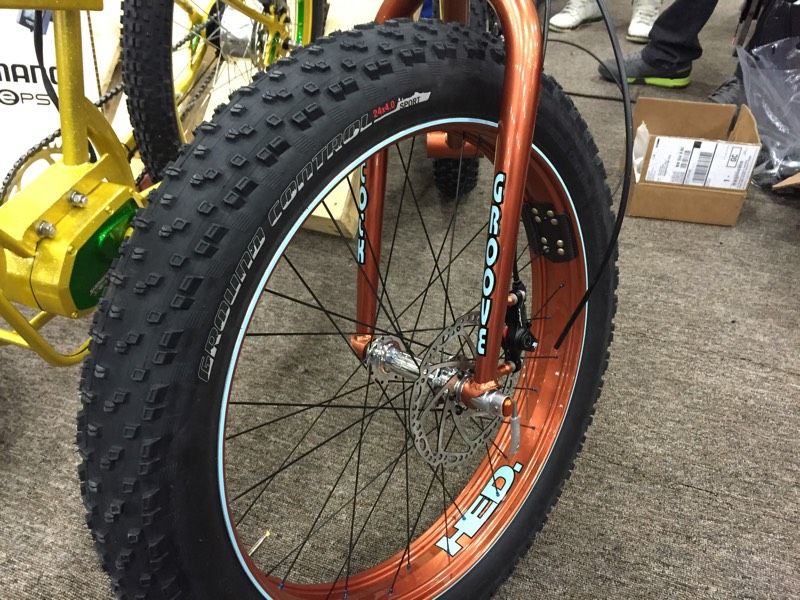
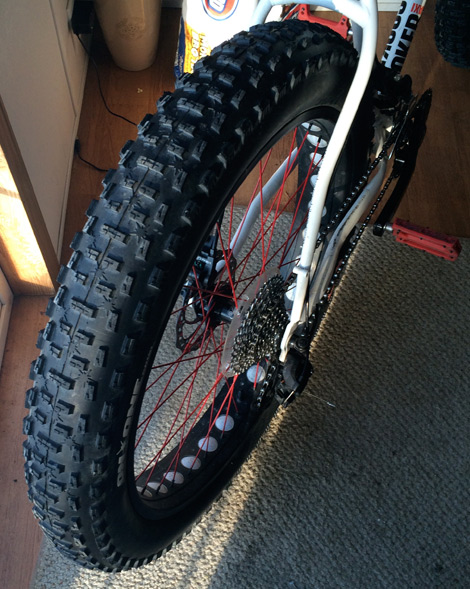
Even the most expensive and high-quality tire will eventually have to be replaced. The reasons may be - wear of tires, their severe damage or puncture of the chamber. How to remove a tire from a bicycle correctly and what tools will be needed, we understand the article.
The reasons may be - wear of tires, their severe damage or puncture of the chamber. How to remove a tire from a bicycle correctly and what tools will be needed, we understand the article.
To remove a tire, you only need one tool - bead vanes. They are lightweight, compact and easy to take on trips.
Sidewalls are available in various materials:
The first option is universal. The kit comes with 2-3 side blades. Often they are completed with repair kits for sticking cameras.
Metal bars used for road tires. This is due to the high rigidity of the rubber.
Do not use screwdrivers, hexagons or other unsuitable tools to change a tire on a bicycle. They can damage the rim, tire or inner tube.
Before removing a tire, the wheel must be removed from the bike. Then proceed as follows:
Then proceed as follows:
It is better to take sets with three bead blades, then changing tires on a bicycle will be even faster and easier.
If you only need to remove the tube, it is enough to disassemble one side of the tire.
Clean the tire before installation. Further sequence of actions:
With road tyres, the whole process is carried out with the bead vanes.
After changing a tire on a bicycle, it happens that it does not sit correctly in relation to the rim. It is necessary to moisten the place where the tire meets the rim with a soapy sponge. Then when inflating the tire sits exactly.
Now you know how to remove a tire from a bicycle quickly and easily. If you do not want to bother, you can contact the bike shop.
06 Breast 2018, Thu
In this article, we'll show you how to fix a puncture or cut on a tubeless bike tire. What tools are needed for this. What mistakes should not be made when repairing bk rubber.
For repair of punctures and cuts up to 2cm - you can use special repair kits for BC tires. They are a screwdriver with a sharpener and a special hook for a tourniquet made of vulcanized rubber. In our store, such sets are represented by the Lezyne brand:
In our store, such sets are represented by the Lezyne brand:
1. So, we got a puncture or a cut in the tire. First you need to quickly find the puncture site and prepare a repair kit.
Important! It is advisable not to let the tire go down "to zero" as it can "click out of the beads" (this is when the tire peels off the rim bead) and then, in addition to the puncture, you will also have to solve the problem with inflation in the field, and this requires a special Co2 pump or a high-performance pump/stack/compressor. So that the tire does not go down completely, you can not remove the object due to which the wheel has broken through or pinch the puncture site with your finger until you start to eliminate the puncture.
2. Prepare the site of damage to the tire: We remove the cause of the puncture from the wheel, if it remains, and insert the awl of the repair kit into the site of damage and grind it.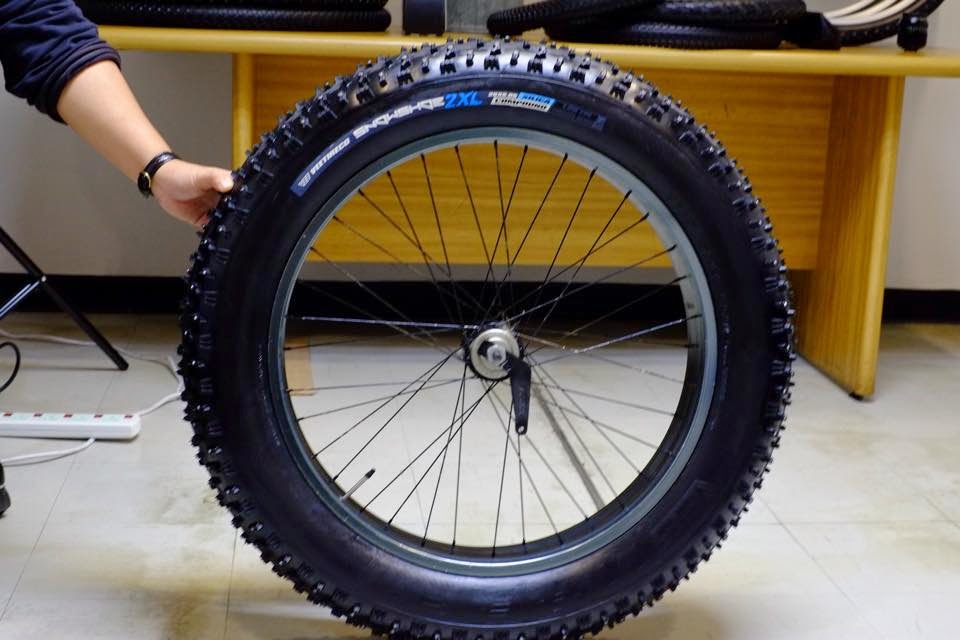 We take out the awl and again hold the puncture site with your finger so that the wheel does not go down.
We take out the awl and again hold the puncture site with your finger so that the wheel does not go down.
3. Take the tourniquet and insert it into the holder as shown in the photo.
4. Together with the tourniquets, we insert our awl into the puncture site by about 1.5-2 cm so that two tendrils of the tourniquet stick out. Glue is not required. If there is sealant left in your tire, it will seal the remaining puncture well. If the sealant is not enough, it is advisable to add it, but after using the repair kit.
5. Now the most difficult moment, which everyone who has ever dealt with tire repair does in his own way, is how to remove the awl and at the same time leave the tourniquet in the tire. Someone simply breaks the tourniquet in half by twisting the awl in the tire (this is what many motorists or motorcyclists do), but for this you need to have a fairly strong tire with a thick bead. If the tire is light and thin, then this trick will not work.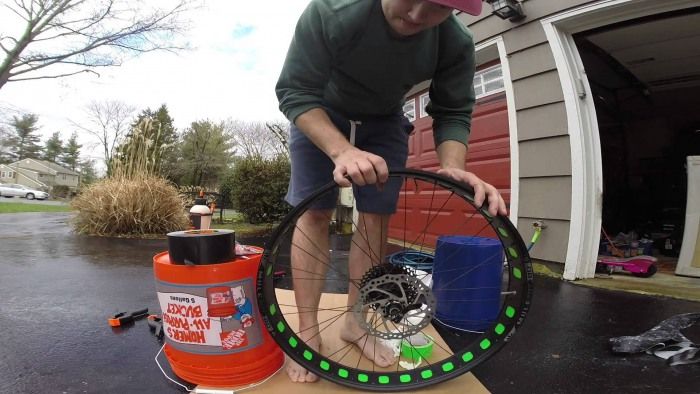
Tip: In my experience, I stretch the tourniquet a little in the middle, thereby making it thinner at the awl grip. This allows you to easily remove the holder from the flagellum when it is already in the tire.
Q&A:
How reliable and durable is this repair? How wide can a hole be repaired with a repair kit?
- With proper use of the repair kit, this repair will last the entire life of the tire. An exception occurs only in cases where the cut is more than 1.5-2 cm or the tire at the place of the cut begins to "diverge along the seam".
Do I need to cut off the tendrils from the harness protruding from the tire?
Not required. Over time, they will rub against the asphalt because they have a softer rubber compound than your tire.
Can the repair kit be used in wet weather?
Yes. No problem.
Can an awl or a small screwdriver be used instead of a special awl-screwdriver for repairing tubeless tires?
- It is possible, but this carries with it certain nuances.